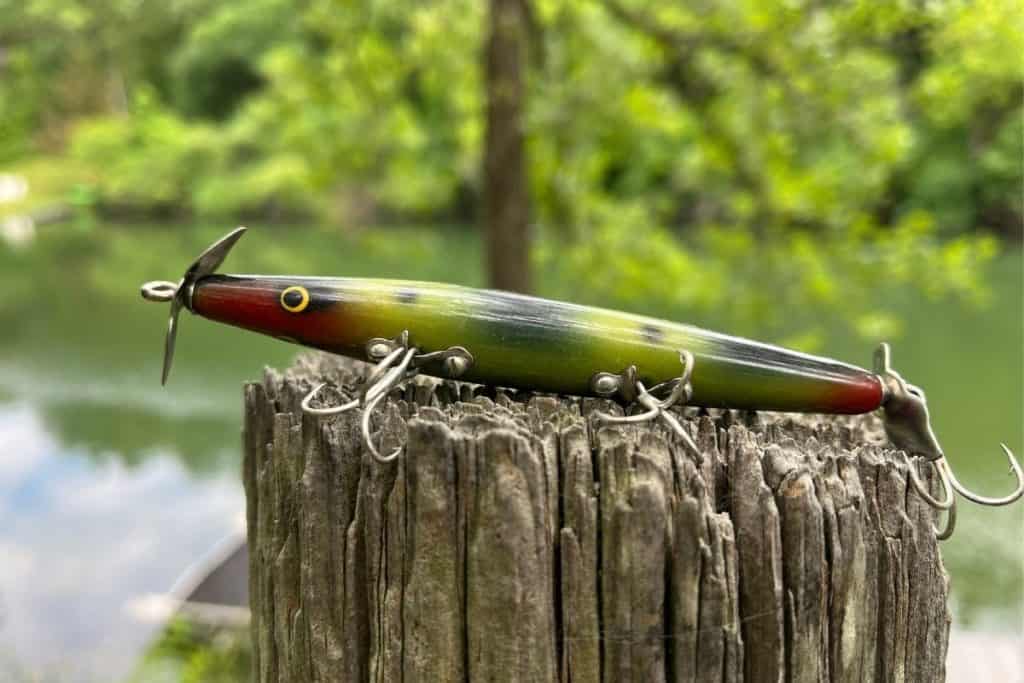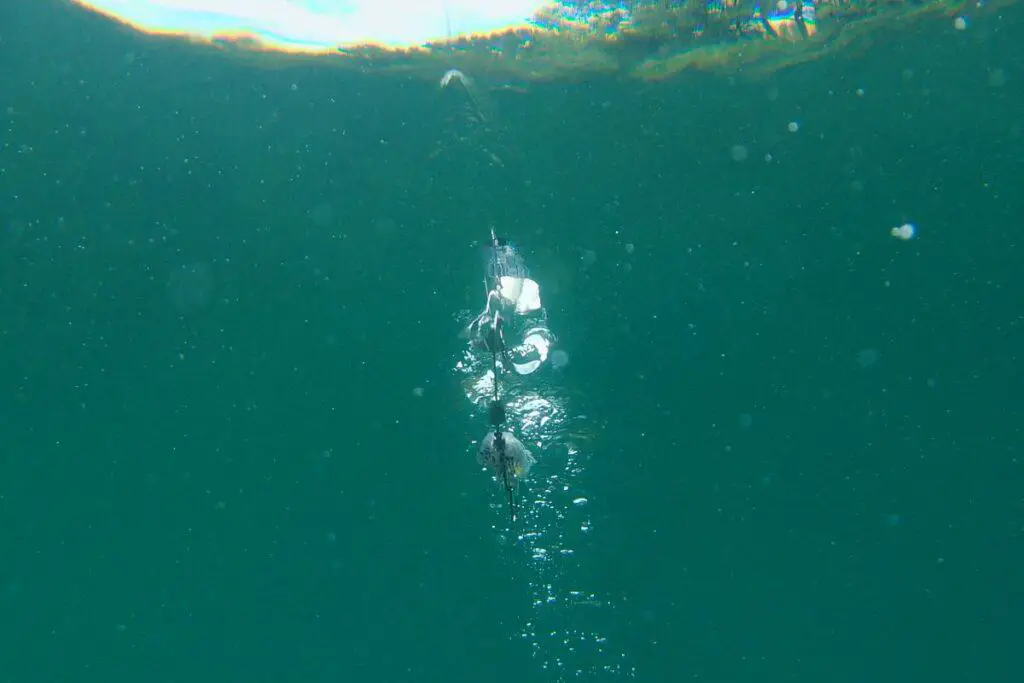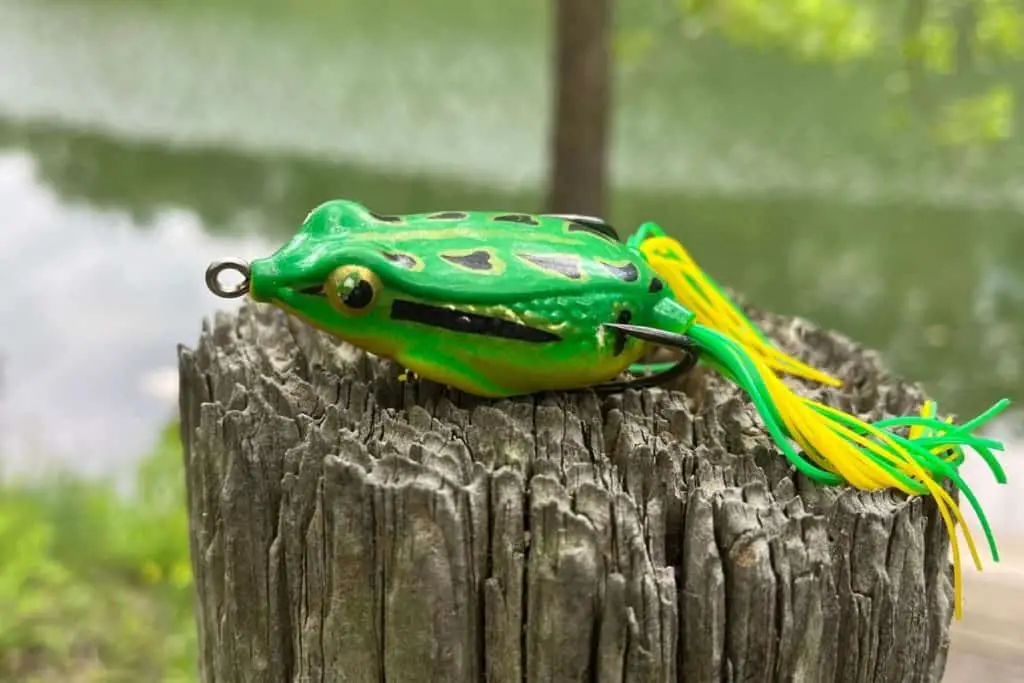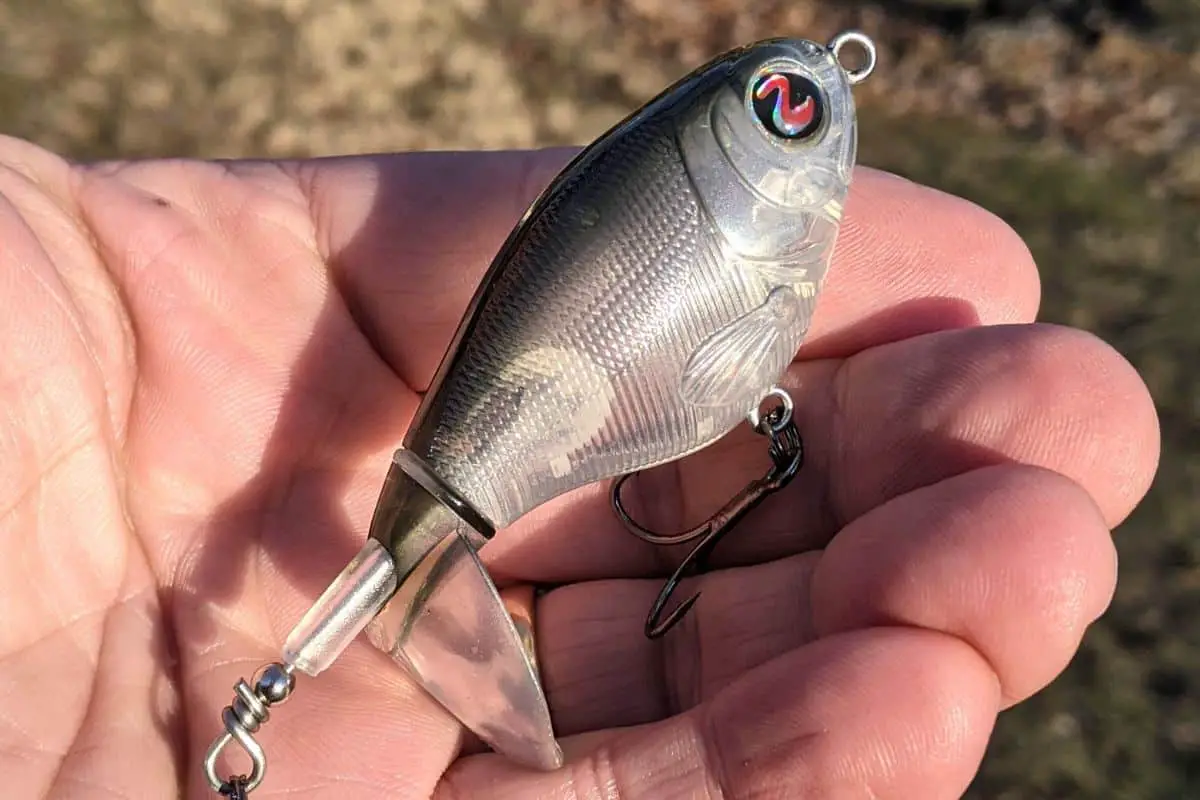There are few things that are more fun than watching a bass explode on a topwater lure. The wide diet of largemouth bass create lots of opportunities for anglers to mimic prey species.
The Two Categories of Topwater Lures for Bass
We can break topwaters down into two distinct categories. The first would be searching topwaters and the second classification would be target topwaters.
Searching topwaters excel at covering a lot of water and finding where bass are hanging out. These lures are constantly moving and consist of a variety of body styles and configurations.
Some of the more well-known searching topwaters include walking baits (Zara Spook, Strike King Sexy Dawg, Lucky Craft Sammy,) buzzbaits and the very popular Whopper Plopper.
We will break down how to fish these lures later in the article.
The second category of topwater lure is the target topwater. These baits can be worked slowly along specific targets, like a dock or stumps, and sit in one spot.
Target topwaters include lures like poppers, prop baits, and hollow-body frogs.
Another way to think about a target topwater is a lure that coaxes, or draws, bass from cover.
Savvy bass anglers use these two types of topwater lures to first find fish and then dial in exactly what the bass are reacting to once more information is gathered. For example, a walking bait might get blown up on over a submerged weedbed. An angler can then go back and target that weedbed in more detail with a popper or frog once the walking bait bite slows down.

Times of Day When Topwaters Work Well
Topwater fishing is unfairly categorized as a low-light only presentation.
While bass may be out and roaming around more right when a low-pressure system moves in, it is not the only time topwaters can be used.
They are also more versatile than morning and evening only presentations.
Think about the sun and its intense rays. As the sun moves overhead, a portion of the bass population is going to position in shady areas. While some fish will move deep, there will always be a population of fish that prefer shallow, shady cover.
This is the perfect time for target topwaters.
Anglers can eliminate a lot of empty water because of the bass being pushed into more predictable places – like under a boat dock.
During lowlight periods focus on topwaters that cover water, unless you are targeting specific cover, and then during periods of high sunshine, work those topwaters around shade producing cover.

What Topwaters Mimic so Well and Why Bass Attack Them
Whenever we fish topwater lures, we need to think about some sort of prey species that is struggling on the surface.
This could be anything from an insect, to a wounded bird, or a sick baitfish.
Bass are opportunistic predators and take advantage of an easy meal. Something floundering around on the surface offers that type of presentation.
And because this type of wounded prey species approach triggers the feeding instincts of bass, an effective topwater presentation can draw bass from a long distance.
I have spent time on Bull Shoals lake in the middle of the day, in the middle of summer, in crystal clear water, where smallmouth bass rocket from the depths and crush walking baits. We could stand on the deck of the boat and witness this frenzied attack. It was something I will never forget. We were pulling smallmouth from thirty feet of water clear to the surface.
Critical Factor for Presenting Topwater Lures
An erratic retrieve is powerful and needs to be worked into your presentation as much as possible.
Target topwaters do this naturally since they start-and-stop. And even walking topwaters do this to a degree, because they slash from side-to-side.
Yet when anglers fish buzzbaits and Whopper Plopper style baits, they often only use a steady retrieve with almost no erratic behavior.
When the bass are aggressive, this works great, but when bass need more coaxing, a steady and straight retrieve often will go untouched.
Popping a buzzbait or Whopper Plopper with the rod tip will impart little bursts forward. The lure will spit water farther and create a more unpredictable surface commotion. Remember, we are always trying to imitate some sort of prey that is struggling on the surface. Wounded or sick prey equals an easy meal. That is what can really draw in ferocious strikes from bass.
Equipment Selection for Topwater Fishing
While most rod and reel combinations can work topwater lures to some degree of success, the right rod paired with the appropriate lure will make a huge difference in your catch rate.

Equipment for Hollow-Body Frogs
Hollow-body frogs are often worked in and around heavy vegetation. A heavy power rated rod with a fast action will have the strength needed to transfer the hook setting energy to the lure and then winch that bass out of the slop.
Most anglers will use braided line of at least 50lb test. A baitcast reel is most often preferred because of the stronger drag and gears, but a stout spinning reel can work.
A high-speed gear ratio is ideal to get the bass out of the thick weeds as fast as possible.
Equipment for Buzzbaits, Whopper Ploppers, and Walking Baits
For these types of searching, or moving, lures, I prefer to use a medium power rated rod with a moderately fast action.
It is easy when fishing topwaters to yank the lure away from the bass before they have it fully engulfed.
A slower action and medium power rating will give the angler more flex in the rod to help alleviate this problem.
This is also important when using topwaters with treble hooks, like the Whopper Plopper. Treble hooks are considered a “grabbing” hook instead of a true penetrating hook like the single hook configuration of a buzzbait.
Once again, I prefer baitcast reels, but spinning reels can work these lures effectively as well.
As far as line, I am a big fan of monofilament for this category of lures. The added stretch also helps me not pull the lure away too quickly.
Equipment for Target Topwaters like poppers and prop baits
I consider this classification of topwaters as more finesse in nature.
Because of this, I prefer to throw them on a rod with a medium light power rating and a fast action.
The power rating is ideal for effective hook sets and the fast action gives the rod enough flex at the very end of the tip to assist in making accurate casts.
Once again, I like monofilament for these applications.
Presentation Style for Topwaters
It’s important when topwater fishing to always be thinking about edges.
Sometimes these edges are obvious, like those along a dock or the length of a laydown.
However, the edges that are often the most important are under the water. This may be either the inside or outside edge of a weedbed. It could be the first major depth change away from shore. It could also be an edge where one type of rock transitions to another.
Presenting our topwaters along these edges keep our lures in the potential “zone” for the longest period of time. Paralleling is the most efficient way to do this.
Many times, anglers will toss topwaters straight towards the bank and bring the lures back perpendicular to the shoreline. On days when bass are aggressive, this can work fine, but on most other days, this is an inefficient way to fish. The lure is only in the correct zone for a short period of time.
When that zone is figured out, repositioning to make parallel casts will result in many more strikes.
Good luck and make sure to go out and encourage someone today. You never know how you may change their life forever.
Isaiah 6:8

